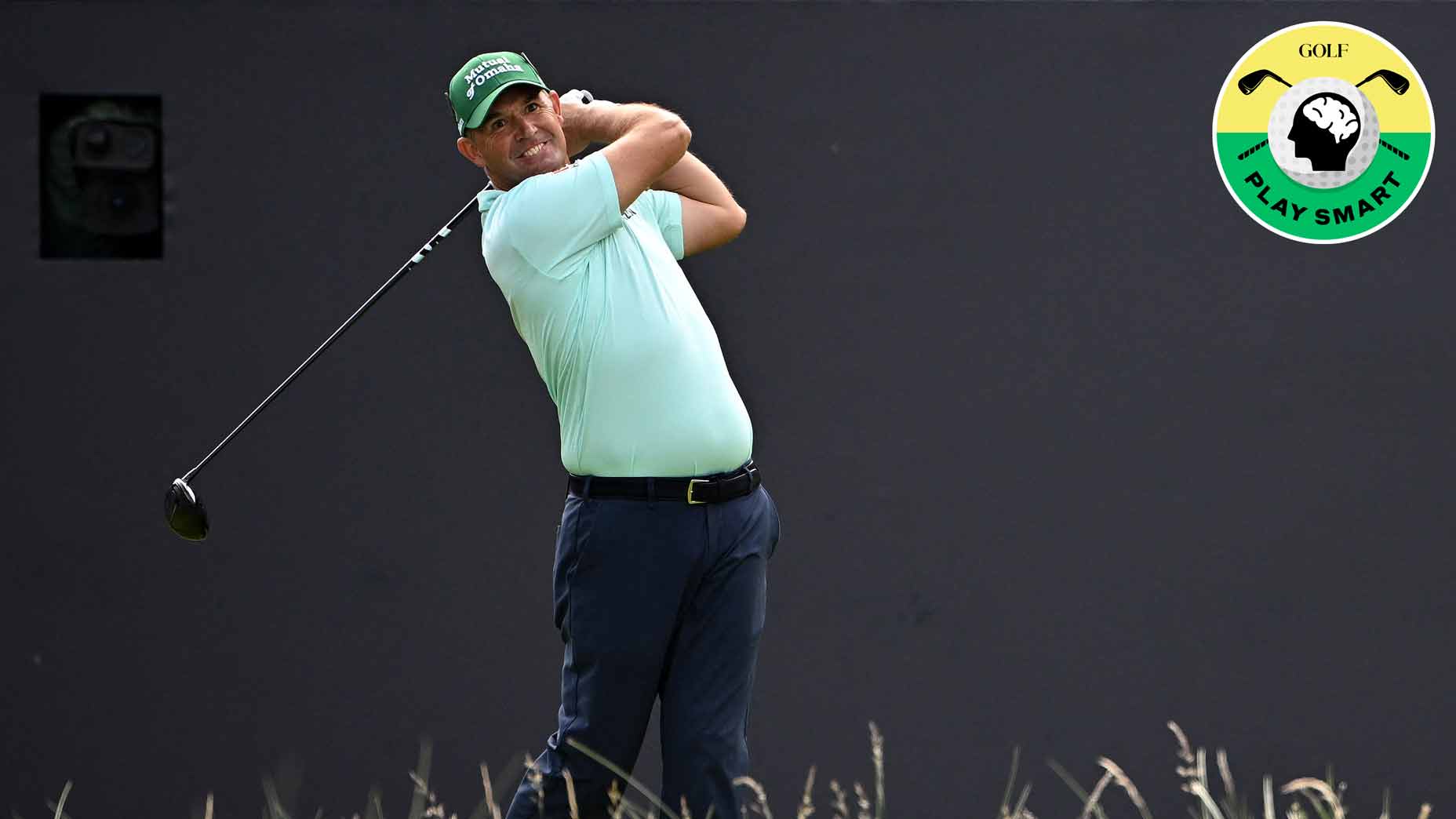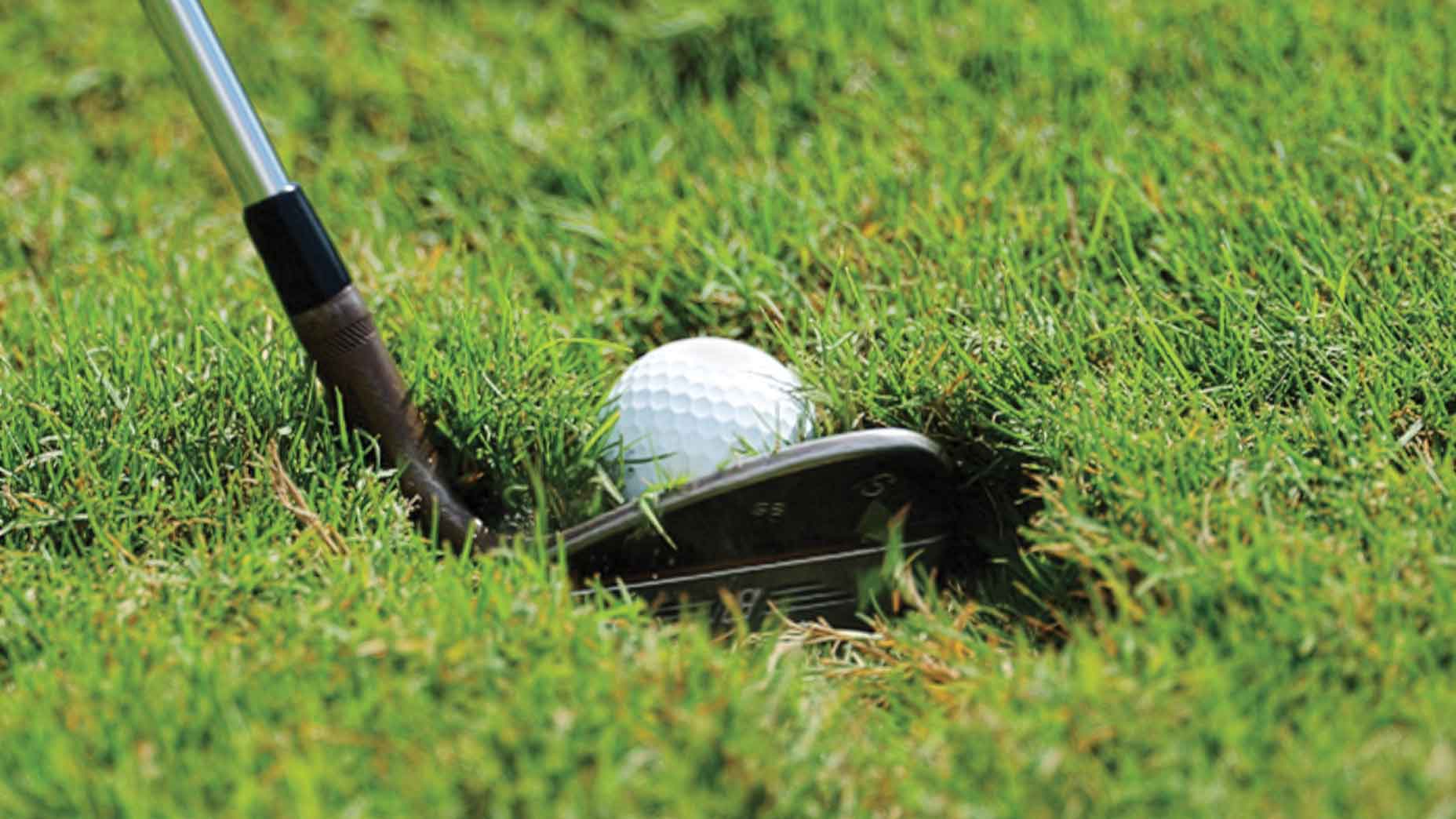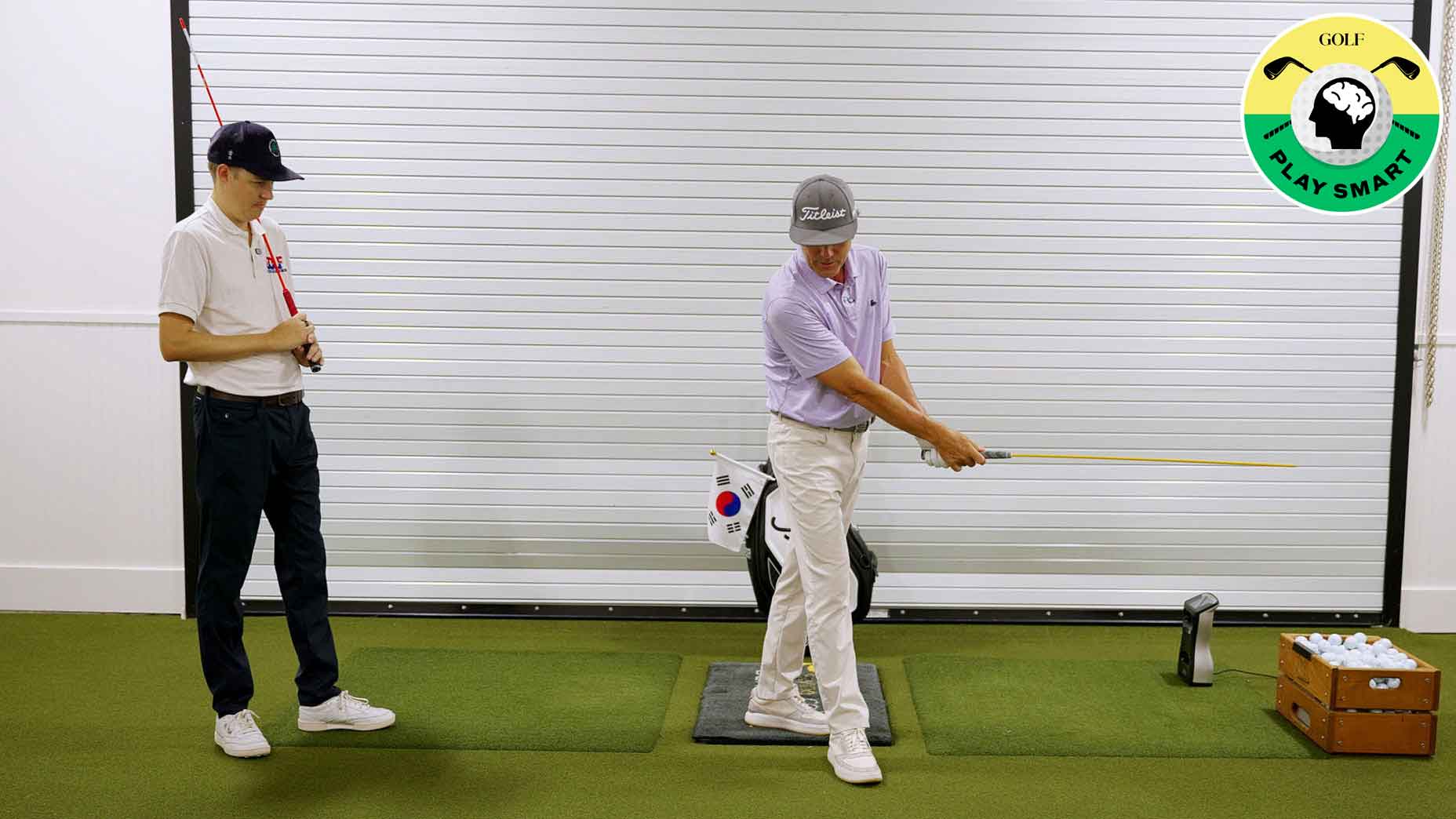Welcome to Play Smart, a regular GOLF.com game-improvement column that will help you play smarter, better golf.
Generating more power is a must if you want to take your game to the next level. Short and straight is good for a while, but that tactic has a firm ceiling. If you want to become truly great, you have to be able to keep up with the distance boom.
There are several ways to hit the ball longer (such as hitting the ball off the center of the clubface), but the most intuitive way is simply by swinging harder. The harder you swing, the more clubhead speed you’ll produce and the more yards you’ll get. Simple, right?
But swinging harder is not always so simple. On the range — where there is little consequence for hitting the ball off line — it is easier to swing with reckless abandon. However, when you get on the course, your subconscious will sometimes throw on the brakes to corral you.
To combat this, you need to train yourself to swing fast on the course.
🏌🏻♂️Fast practice swings on course🏌🏻♂️@padraig_h talking about priming the nervous system before hitting to reach closer to his peak speeds.
— SuperSpeedGolf (@SuperSpeedGolf) October 15, 2023
pic.twitter.com/krSEkR23rC
Practice swinging fast
Padraig Harrington knows that strokes gained off the tee comes mainly from distance, not accuracy. So, he’s made it his mission over the past several years to gain as much power as possible.
Speed training and working out have helped in this conquest, but one of the simplest ways he’s added yards is by priming his muscles while on the course.
“I know [from] over the years that my first, second, third — and usually my third or fourth shot is the fastest,” Harrington says. “So when I take my practice swings on the golf course, I’m trying to get the first three shots out of the way so I’m fast.”
On those hard practice swings, Harrington is trying to swing harder than he ever would in a tournament. By doing this, he’s priming his muscles to move fast and allowing his body to move the way it needs to for hitting bombs.










